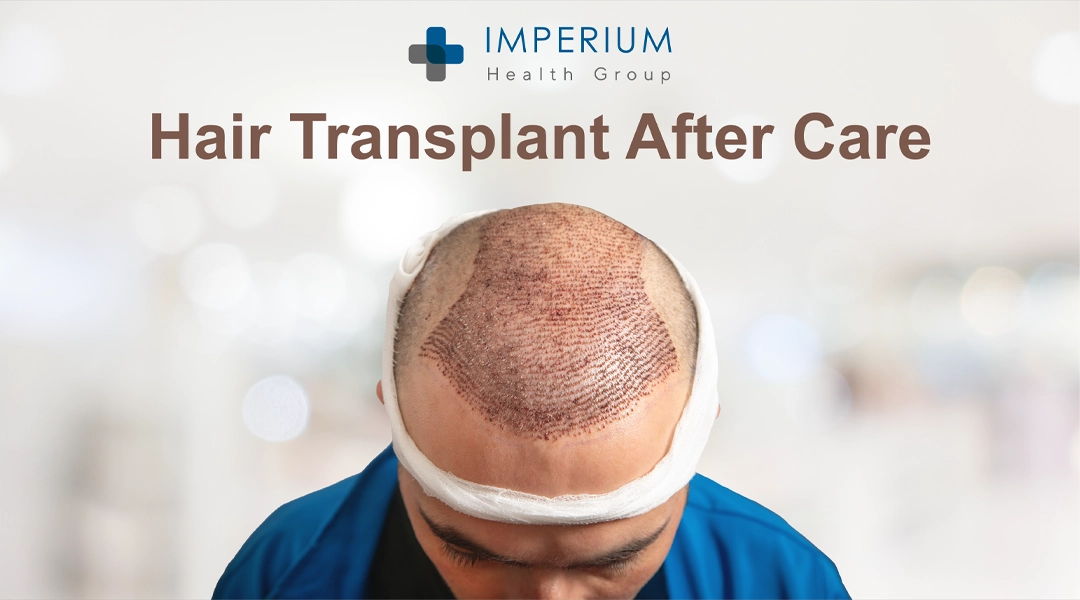Hair transplants are a life-changing solution for individuals experiencing hair loss, but the journey doesn't end when you leave the clinic. On the contrary, post hair transplant care is one of the most important stages of the entire procedure, determining how well your grafts heal and grow.
Whether you've undergone a procedure in Turkey, the UK, or the US, following a dedicated post care after hair transplant routine can make a significant difference in your results. This blog helps you figure out how to correctly take care of yourself post hair transplant surgery, from the minute you leave the hospital to 6 months post-op!
Why Hair Transplant Aftercare Is Important for Better Results
A hair transplant isn’t just about the surgery—it’s about the healing that follows. By taking care of your hair properly post-transplant, you safely eliminate the risk of infections, support graft survival, and promote natural hair growth. Inconsistent care or premature resumption of normal routines can lead to poor results or even graft loss that will make the process much more painful and slow.
Working with a provider like Imperium Health Group ensures you receive continuous aid and a detailed aftercare plan, our medical consultants ensure you’re supported every step of the way.
Post Hair Transplant: What to Expect in 72 Hours
The first three days post-surgery are the most sensitive and require the most caution. You can expect:
- Mild redness, swelling, and tightness in the transplant and donor areas.
- Tiny scabs forming around the grafts.
- A recommendation to sleep with your head elevated to avoid swelling.
During this time, after hair transplant care means no touching, scratching, or washing your scalp. Cold compresses may be used (as advised), and gentle saline sprays can help with comfort, sleeping post hair transplant is also a very important factor that patients must adhere to and have the proper tools to support themselves.
Day-by-Day Hair Transplant Care & Recovery Timeline
Day 1 to Day 3
Focus on rest. Use prescribed medications and avoid direct sunlight, heavy lifting, and sweating. Keep your scalp dry and elevated during sleep, it is essential to focus completely on regaining energy and rest.
Day 4 to Day 9
You’ll begin gentle washing, often referred to as the first step of after hair transplant shampoo care. In this process it is advised for patients to use medical-grade or baby shampoo and gentle dabbing rather than rubbing, it is essential to not irritate the scalp at all.
By Day 7, scabs will start falling off. Do not pick or scratch them; let them shed naturally.
10 Days After Hair Transplant
This is the shedding stage for the scabs, and the redness should be normal to minimal. Shedding of transplanted hairs may begin around this time, this is normal and part of the regrowth cycle.
Specialists recommend using castor oil after hair transplant for nourishing the scalp, but always consult your doctor before using any product.
Things to Avoid After Hair Transplant
In order to allow your grafts to heal properly, avoid the following:
- Smoking and alcohol for at least two weeks
- Touching or scratching the scalp
- Wearing tight hats or helmets
- Exposure to direct sunlight or saunas
- Intense workouts or swimming in chlorinated water
- Unapproved topical products
Recommended Daily Activities After Hair Transplant
- Follow a nutrient-rich diet for skin and hair recovery.
- Avoid stress—cortisol can impact healing.
- Stay hydrated and get 7–9 hours of sleep per night.
- Engage in light walks after Day 5 to improve circulation.
Choosing the right products, especially when it comes to shampoo after hair transplant, is critical. Go for gentle, sulfate-free formulas recommended by your surgeon. We recommend medical grade or bay formulas for gentle washing.
Whether you're just starting your hair restoration journey or are navigating the 10 days after hair transplant stage, remember that results don’t come from surgery alone. With the right guidance, careful maintenance, and professional aftercare, your outcome can be natural, long-lasting, and confidence-boosting.
Looking for expert-led support? Imperium Health Group connects you to some of the best names in global healthcare, with the aftercare you deserve.
FAQ’s
When can I rub my head after a hair transplant?
You should avoid rubbing your head for at least 10–14 days after a hair transplant. This allows the grafts to settle and reduces the risk of dislodging them.
How long should I wear a hairband after a hair transplant?
Most patients are advised to wear a hairband (forehead band) for about 3–5 days after the procedure. This helps reduce swelling and provides light support during the initial recovery phase.
How many days of rest are needed after a hair transplant?
Most patients need about 2–5 days of rest after a hair transplant. Light activities can resume after that, but strenuous work or exercise should be avoided for 10–14 days.
